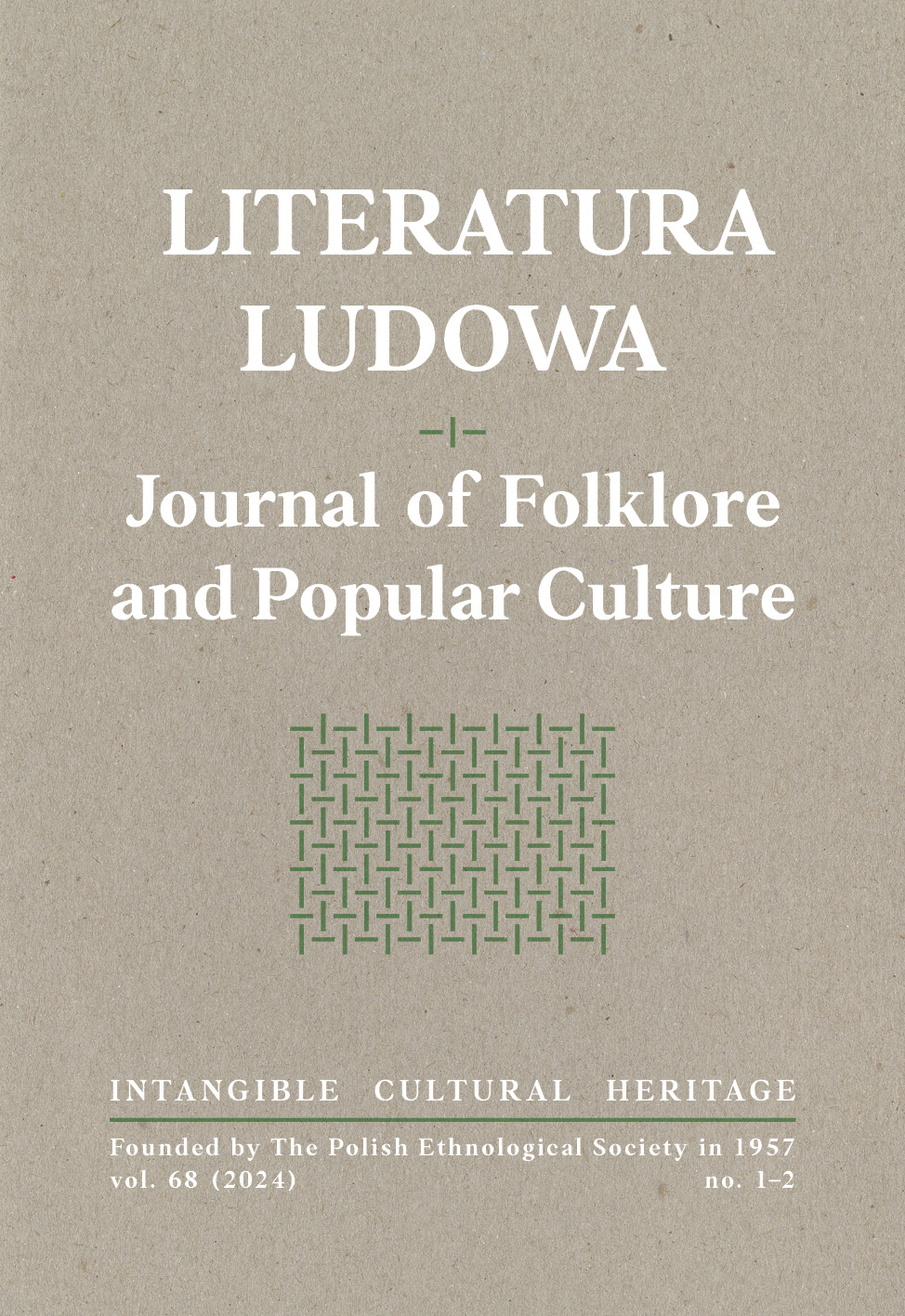Verbuňk and Rides of the Kings: Reflections on Transformations of Tradition in the Light of Intangible Cultural Heritage
DOI:
https://doi.org/10.12775/LL.1.2024.009Klíčová slova
Czech Republic, Moravia, folk traditions, intangible cultural heritage, verbuňk, ride of the kingsAbstrakt
The study of manifestations of folk culture (including those that have survived in modern society) provides a valuable research field for learning about the mechanisms of tradition and its functioning. In addition to the immanent development of tradition, however, it is always necessary to pay attention to external impulses. In the last two decades, the concept of intangible cultural heritage (ICH) certainly belongs to them, as not only is it a theoretical starting point for grasping the study of folk traditions in the present, but it also has a retroactive effect on their form and longevity. The basis of the presented contribution is a reflection on this issue in the Czech environment, particularly concerned with two examples from the region of South-Eastern Moravia: the solo male dance verbuňk, which was entered on Representative List of UNESCO in 2005 (respectively 2008), and the custom “the ride of the kings”, which was entered on the same list in 2011.
Reference
Doušek, R. (2016). Sociální souvislosti folklorismu na Moravě na konci 19. století. Český lid, 103(2), 199–216.
Habartová, R., Štěrba, S. (2008). Jízda králů v Kunovicích. Město Kunovice.
Janeček, P. (2015). Evropská etnologie a koncept nehmotného kulturního dědictví. Národopisná revue, 25(3), 273–282.
Krist, J., Pavlicová, M. (2015). Národní ústav lidové kultury a Mezinárodní folklorní festival ve Strážnici (k 60. výročí založení ústavu a 70. výročí konání festivalu). Národopisná revue, 25(4), 278–291.
Maňáková, M. (2022). Role školy a pedagogů v transmisi lidové kultury na Horňácku [master thesis]. Masaryk University Digital Repository. https://is.muni.cz/th/juahc/
Pavlicová, M. (2007). Lidová kultura a její historicko-společenské reflexe. Ústav evropské etnologie, Masarykova univerzita.
Pavlicová, M. (2017). The folk tradition and its transformation in the context of social influences and contributions by individuals: Using the Slovácko ‘Verbuňk’ male recruitment dance as an example. Glasnik Etnografskog instituta SANU, 65(2), 305–320.
Pavlicová, M. (2021). The Image of Staged Folk Culture: From the Presentations of Traditions to a Staged Genre. Národopisná revue, 31(5), 21–32.
Pavlicová, M., Uhlíková, L. (2013). Folklor jako součást nehmotného kulturního dědictví: Kam s ním? In I. Přibylová, L. Uhlíková (eds.), Od folkloru k world music: Co patří do encyklopedie? (pp. 9–21). Městské kulturní středisko.
Smeets, R. (2022). From folklore to living heritage: On the development of UNESCO’s contribution to the safeguarding of the intangible cultural heritage. Národopisná revue, 32(2), 83–98.
Stavělová, D. (Ed.) (2021). Tíha a beztíže folkloru. Folklorní hnutí druhé poloviny 20. století v českých zemích. Academia.
Teturová, J. (2012). Verbuňk v Žatčanech na Brněnsku v současném kulturně-společenském kontextu. Národopisná revue, 22(4), 275–279.
Zeman, M. (1951). Horňácké tance. Orbis.
Stahování
Publikováno
Jak citovat
Číslo
Sekce
Licence
Copyright (c) 2024 Martina Pavlicová

Tato práce je licencována pod Mezinárodní licencí Creative Commons Attribution-NoDerivatives 4.0.
1. The authors give the publisher (Polish Ethnological Society) non-exclusive license to use the work in the following fields:a) recording of a Work / subject of a related copyright;
b) reproduction (multiplication) Work / subject of a related copyright in print and digital technique (ebook, audiobook);
c) marketing of units of reproduced Work / subject of a related copyright;
d) introduction of Work / object of related copyright to computer memory;
e) dissemination of the work in an electronic version in the formula of open access under the Creative Commons license (CC BY - ND 3.0).
2. The authors give the publisher the license free of charge.
3. The use of the work by publisher in the above mentioned aspects is not limited in time, quantitatively nor territorially.
Stats
Number of views and downloads: 420
Number of citations: 0



